The basic working principle of pneumatic valve is that compressed air enters the pneumatic actuator to drive the Piston, and then rotating or lifting torsion shaft drives the stem. Pneumatic valves are divided into single-acting(spring return) and double-acting.
Single-acting(spring return) pneumatic actuator is the spring-driven Piston structure, there are two principles: normally open(NO) and normally closed(NC), which means that: when air goes in, the valve closed(NO); when air goes in, the valve opened(NC).
Double-acting pneumatic valves actuator need to be equipped with 5-way 2-position solenoid valve to control the air goes into different entrance and then control the valve open and close. When driving the same valve body, the opening and closing speed of double acting is faster than the single acting.
Principles of Single Acting & Double Acting Actuators
Principle of Single Acting Actuator (Spring Return)
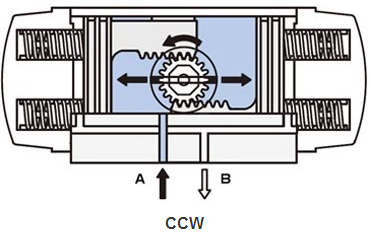
Air to port A forces the pistons outwards, causing the springs to compress, The pinion turns counterclockwise while air is being exhausted from port B.
Loss of air pressure on port A, the stored energy in the springs forces the pistons inwards. The pinion turns clockwise while air is being exhausted from port A.
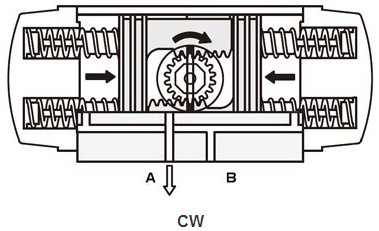
Air to port B forces the pistons outwards, causing the springs to compress, The pinion turns counterclockwise while air is being exhausted from port B.
Loss of air pressure on port A, the stored energy in the springs forces the pistons inwards. The pinion turns clockwise while air is being exhausted from port A.
Principle of Double Acting Actuator
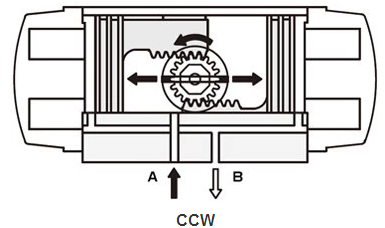
Air to Port A forces the pistons outwards, causing the pinion to turn counterclockwise while the air is being exhausted from Port B.
Air to Port B forces the pistons inwards, causing the pinion to turn clockwise while the air is being exhausted from Port A.
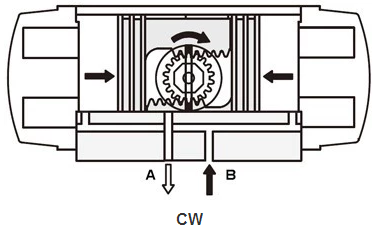
Air to Port A forces the pistons outwards, causing the pinion to turn clockwise while the air is being exhausted from Port B.
Air to Port B forces the pistons inwards, causing the pinion to turn counterclockwise while the air is being exhausted from Port A.
Output Torque Diagram
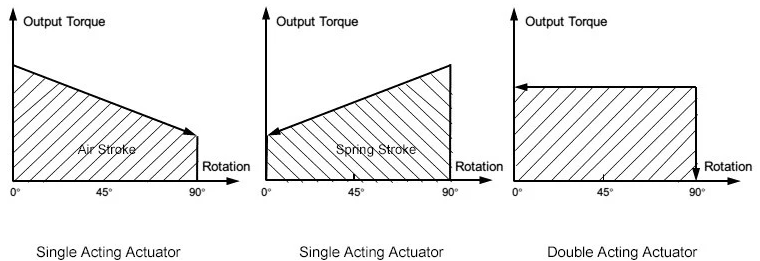
Post time: Jul-28-2021




